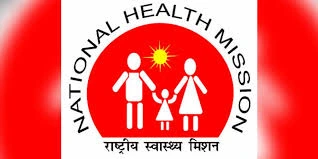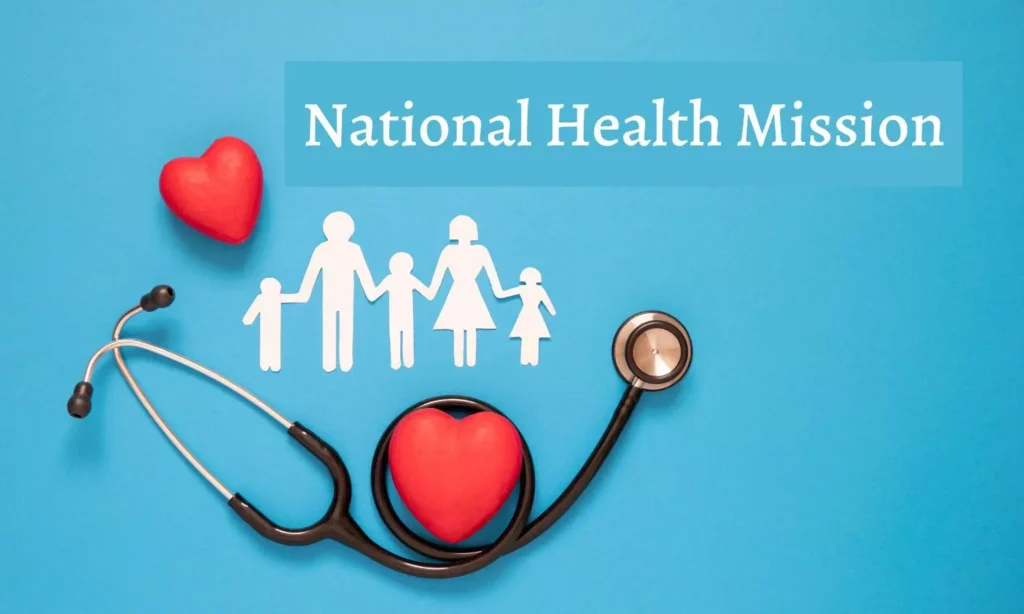The Government of India(GOI) launched the National Health Mission (NHM) in 2013, comprising its two sub-missions – the NRHM and the NUHM. The NHM promotes universal access to health care that is equitable, affordable and of good quality and the services rendered to the people are responsive and accountable to their requirements. The NHM supports the States and Union Territories in their efforts to strengthen their healthcare systems. The three broad programmatically identifiable components of the programme relate to reducing maternal and child mortality, and prevention of transmissible and non-communicable diseases. Further, it strengthens rural and urban healthcare infrastructure.
Introduction to the National Health Mission
National Health Mission (NHM): This program works under the Ministry of Health and Family(MoHF) Welfare and focuses on the accomplishment of universal healthcare delivery all over India. It will subsume the NRHM and NUHM into one National Health Mission. The broad mandate is to provide accessible, affordable and quality health services to all.
What are the Objective of National Health Mission (NHM)?
The NHM aims to address some of the inalienable, critical health challenges beyond undertaking comprehensive healthcare reforms. A few of its set goals include-
- Universal Access to Healthcare- To ensure essential healthcare facilities are accessible to all, mainly citizens who live in rural and remote parts of the country.
- Improving Health Outcomes- Reduction in maternal and child mortality rates by two-thirds, control over transmissible diseases and high-impact intervention in non-communicable diseases such as diabetes and cardiovascular conditions.
- Strengthening Health Infrastructure- Infrastructural development, capacity building, and resource mobilization in primary, secondary and tertiary healthcare facilities.
- Promotion of Health Awareness- It would involve much about health-related issues, preventive measures and healthy lifestyles to instil more health-oriented behaviour in society.
Also Read:- Ladli behna yojana || PM Vishwakarma Yojana || E Shram Card Pension Yojana
Key Components of National Health Mission (NHM)

- National Rural Health Mission (NRHM)- Focuses on improving healthcare delivery in rural areas by strengthening primary health centres, improving infrastructure and increasing the availability of healthcare professionals.
- National Urban Health Mission (NUHM): Aims to address healthcare challenges in urban areas, especially in slum communities by establishing primary health centres and improving access to services.
- Health Systems Strengthening (HSS): HSS improves overall healthcare systems by enhancing management practices, increasing efficiency and integrating services across various levels.
- National Mobile Medical Units (NMMUs): Provides mobile healthcare services to remote and hard-to-reach areas, ensuring that even the most isolated communities receive medical attention.
Also Read:- State Bhulekh || Bhulekh Real Time || Bhulekh Gorakhpur || MP Bhulekh
National Health Mission (NHM): Major Initiatives

The NHM brings various key initiatives to help solve diverse healthcare-related challenges in the country. NHM initiatives vary according to the needs of the region. A few of the prime driving force initiatives behind the National Health Mission (NHM) objectives are highlighted here:
1. Ayushman Bharat:
The first part is the creation of 1,50,000 Health and Wellness Centres in urban and rural areas that will ensure comprehensive Primary Health Care. It subsumes the existing reproductive & child health and transmissible diseases services and adds services for common non-communicable diseases such as Hypertension, Diabetes and Oral, Breast, and Cervical cancers.
The second module is Ayushman Bharat Pradhan Mantri-Jan Arogya Yojana—the world’s largest publicly funded health assurance scheme—covering INR 5 Lakh per family per annum for secondary and tertiary care hospitalisation. As of June 30, 2023, about 34.7 Cr Ayushman Cards have been made.
2. ASHAs:
A key element of NRHM is ASHA to be posted in every village. The ASHA is a female health activist, selected from the rural area. They are trained to act as an interface between the village community and the public health system. ASHAs are expected to give appropriate counselling to women regarding birth preparedness, safe delivery, breastfeeding, contraception and prevention of infection. They mobilise the community to access health services at various centres covering areas like immunisation, antenatal check-ups, postnatal check-ups, supplementary nutrition, and sanitation.
3. Janani Shishu Suraksha Karyakram (JSSK):
This will ensure that all pregnant women delivering in public health institutions get entirely free delivery, including caesarean sections. It is for an entitlement-based approach, whereby the scheme will offer free drugs, consumables, diagnostics, diet during the stay, blood provision, and transport from home to health institution. All the entitlements include sick infants up to one year of age while accessing public health institutions. This is uniformly undertaken across all States and Union Territories, reflecting the commitment to ensuring access to essential maternal and infant healthcare.
4. The Rashtriya Bal Swasthya Karyakram (RBSK):
Child Health Screening and Early Intervention Services was launched in February 2013. It aims to screen diseases specific to childhood, developmental delays, disabilities, birth defects and deficiencies. This initiative will cover about 27 Cr children between 0–18 years of age and provide free treatment including surgery, for health problems diagnosed under this initiative.
5. National Ambulance Service-
One can avail of this service with the help of a Toll-Free number. The Toll-free number can vary according to the state. You can use the national ambulance service number 102.
Also Read:- Pradhan Mantri Fasal Bima Yojana(PMFBY) || What is 1xBet India famous for? || Pradhan Mantri Fasal Bima Yojana
Achievements and Impact
Within a very short period since its launch, the National Health Mission (NHM) has been able to transform India’s healthcare sector in the following way:
1. Improved Access to Healthcare Services:
NHM has increased the number of health institutions, especially in rural and remote areas. It improved access to essential health services for millions of people.
2. Reduction in Maternal and Child Mortality Rates:
It is with serious concern for maternal and child health that there is a remarkable fall in maternal and child mortality rates. This reflects improvement in prenatal care, delivery services and postnatal care.
3. Health Awareness:
The NHM has contributed to a great extent in raising awareness regarding several important health concerns. These are sanitation, nutrition, and preventive health measures through its multiple outreach programs and campaigns.
4. Improved Infrastructure in Health:
The establishment and upgrading of primary health centres, district hospitals and other health institutions have gone a long way in strengthening the infrastructure, thereby yielding better service delivery.
5. Higher Quality Workforce-
Training for healthcare workers from doctors to nurses and even community health volunteers, ensures that healthcare services are better quality and the workforce is more competent.
Also Read:- National Rural Employment Guarantee Act || Make in India || PM Awas Yojana Gramin List
Conclusion
The National Health Mission is an Indian government scheme. It is set to increase access to quality healthcare in rural and urban areas of the country. The major initiatives taken up are upgrading health facilities and strengthening the disease surveillance system. NHM is successful in bringing down mortality and improving access to healthcare, geographical disparities and resource constraints are significant. What would be needed in coming years is sustained investments, innovation and execution of its policies.
Also Read:- Pradhan Mantri Awas Yojana || Pradhan Mantri Gramin Digital Saksharta Abhiyan || Pradhan Mantri Suraksha Bima Yojana
FAQs:
1. What is the objective of NHM?
Ans. The NHM aims to improve the availability of and access to quality health care by people. For those residing in rural areas, the poor, women and children.
2. What is the Impact of NHM?
Ans. NHM Improves access to healthcare, reduces maternal and child mortality, and enhances healthcare facilities.
3. What are NHM’s future plans?
Ans. NHM’s future plans include expansion of services, exploitation of technology and deepening public-private partnerships.

